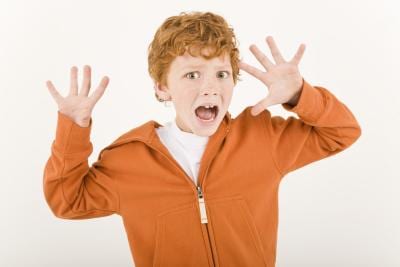Anxiety disorders in children are quite common, according to the Anxiety Disorders Association of America. While periods of anxiety are normal for everyone, one out of every eight children suffer from feelings of anxiety strong enough to be classified as a disorder. These anxiety symptoms interfere with the child’s ability to function normally. For this reason, parents who suspect that their child might have an anxiety disorder should seek treatment as soon as possible.
Symptoms
Many symptoms of anxiety are the same, regardless of the specific type of anxiety disorder, while others are specific to type. Symptoms that are usually common to all children who suffer from anxiety disorders include fear of the unknown, intense shyness, a reluctance to go to school or socialize, and extreme worry. Some children also have trouble sleeping or manifest their anxious feelings in physical ways, such as stomach pain and headaches. Children with an anxiety disorder may also act negatively towards others and have low self-esteem. A few children even suffer panic attacks or selective mutism as a result of their anxiety.
Types
Generalized anxiety disorder tends to affect school-aged children. These children worry constantly — and over just about anything — without a known cause. Children who suffer from obsessive-compulsive disorder suffer from unwanted worry and anxiety and deal with these negative thoughts by engaging in repetitive rituals. Separation anxiety disorder occurs when children are overly anxious about being separated from loved ones. These children may become obsessed with worry over something happening to someone they love. Phobias are also classified as an anxiety disorder. Phobias are defined as being extremely anxious and fearful about one particular thing, such as dogs or spiders. Other anxiety disorders include post-traumatic stress disorder, which is common in children who witness a traumatic event, and social anxiety disorder, which is when children suffer anxiety in social groups or situations.
Time Frame
Anxiety disorders are often more common in a select age group. Separation anxiety, for example, is quite common in children ages 18 months to 3 years, but it is not classified as a disorder unless the child is between ages 4 and 7 and still suffering from the same feelings. Most children who are diagnosed with OCD are around the age of 10, according to the Anxiety Disorders Association of America. Children who suffer from selective mutism are usually between the ages of 4 and 8.
Cause
There is probably a genetic link to anxiety disorders, according to the Merck website, but there is also a behavioral link. Anxious parents usually have anxious children. In fact, this is so common that, often, the parents are treated right along with the child.
Prevention/Solution
The most effective treatments for childhood anxiety are medication and cognitive-behavioral therapy, according to the Anxiety Disorders Association of America. The latter is usually attempted first, as most doctors and therapists are reluctant to medicate children unless absolutely necessary. The behavioral therapy usually focuses on gradually desensitizing the child to the things that are causing his anxiety.





